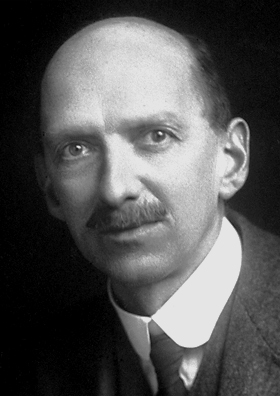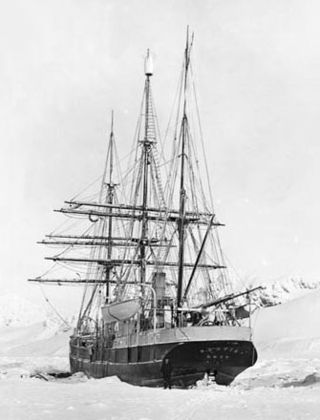Related Research Articles

Ben Nevis is the highest mountain in Scotland, the United Kingdom, and the British Isles. Ben Nevis stands at the western end of the Grampian Mountains in the Highland region of Lochaber, close to the town of Fort William. The mountain's name can translate to either "cloudy mountain" or "venomous mountain".
Fort William is a town in the Lochaber region of the Scottish Highlands, located on the eastern shore of Loch Linnhe in the Highland Council of Scotland.

The Met Office, until November 2000 officially the Meteorological Office, is the United Kingdom's national weather and climate service. It is an executive agency and trading fund of the Department for Science, Innovation and Technology and is led by CEO Penelope Endersby, who took on the role as Chief Executive in December 2018 and is the first woman to do so. The Met Office makes meteorological predictions across all timescales from weather forecasts to climate change.

The Japan Meteorological Agency is a division of the Ministry of Land, Infrastructure, Transport and Tourism dedicated to the scientific observation and research of natural phenomena. Headquartered in Minato, Tokyo the agency collects data on meteorology, hydrology, seismology, and volcanology, and other related fields.

Charles Thomson Rees Wilson was a Scottish physicist and meteorologist who shared the 1927 Nobel Prize in Physics with Arthur Compton for his invention of the cloud chamber.

Ben Lomond, 974 metres (3,196 ft), is a mountain in the Scottish Highlands. Situated on the eastern shore of Loch Lomond, it is the most southerly of the Munros. Ben Lomond lies within the Ben Lomond National Memorial Park and the Loch Lomond and The Trossachs National Park, property of the National Trust for Scotland.

Cleveland Abbe was an American meteorologist and advocate of time zones.
The National Three Peaks Challenge is an event in which participants attempt to climb the highest mountains of England, Scotland and Wales within 24 hours. It is frequently used to raise money for charitable organisations. Walkers climb each peak in turn, and are driven from the foot of one mountain to the next. The three peaks are:

William Speirs Bruce was a British naturalist, polar scientist and oceanographer who organised and led the Scottish National Antarctic Expedition to the South Orkney Islands and the Weddell Sea. Among other achievements, the expedition established the first permanent weather station in Antarctica. Bruce later founded the Scottish Oceanographical Laboratory in Edinburgh, but his plans for a transcontinental Antarctic march via the South Pole were abandoned because of lack of public and financial support.

India Meteorological Department (IMD) is an Indian agency of the Ministry of Earth Sciences of the Government of India. It is the principal agency responsible for meteorological observations, weather forecasting and seismology. IMD is headquartered in Delhi and operates hundreds of observation stations across India and Antarctica. Regional offices are at Chennai, Mumbai, Kolkata, Nagpur, Guwahati and New Delhi.

Clement Lindley Wragge was a meteorologist born in Stourbridge, Worcestershire, England, but moved to Oakamoor, Staffordshire as a child. He set up the Wragge Museum in Stafford following a trip around the world. He was a Fellow of the Royal Geographical Society and in 1879 was elected Fellow of the Royal Meteorological Society in London. To the end of his life, he was interested in theosophy and spiritualism. In 1908, during a tour of India, he met with Mirza Ghulam Ahmad of Qadian, the founder of the Ahmadiyya movement in Islam who had claimed to be the Mahdi, the messianic redeemer awaited by Muslims. Sir Arthur Conan Doyle sought him out in New Zealand to ask for his views on spiritualism before writing The Wanderings of a Spiritualist in 1921. After training in law, Wragge became a meteorologist, his accomplishments in the field including winning the Scottish Meteorological Society's Gold Medal and years later starting the trend of using people's names for cyclones. He travelled widely, giving lectures in London and India, and in his later years was an authority on Australia, India and the Pacific Islands.
Cargill Gilston Knott FRS, FRSE LLD was a Scottish physicist and mathematician who was a pioneer in seismological research. He spent his early career in Japan. He later became a Fellow of the Royal Society, Secretary of the Royal Society of Edinburgh, and President of the Scottish Meteorological Society.

The Scottish National Antarctic Expedition (SNAE), 1902–1904, was organised and led by William Speirs Bruce, a natural scientist and former medical student from the University of Edinburgh. Although overshadowed in terms of prestige by Robert Falcon Scott's concurrent Discovery Expedition, the SNAE completed a full programme of exploration and scientific work. Its achievements included the establishment of a staffed meteorological station, the first in Antarctic territory, and the discovery of new land to the east of the Weddell Sea. Its large collection of biological and geological specimens, together with those from Bruce's earlier travels, led to the establishment of the Scottish Oceanographical Laboratory in 1906.

The Blue Hill Meteorological Observatory in Milton, Massachusetts is the foremost structure associated with the history of weather observations in the United States. Located atop Great Blue Hill about 10 miles south of Boston, Massachusetts, it is home to the oldest continuous weather record in North America, and was the location of the earliest kite soundings of the atmosphere in North America in the 1890s, as well as the development of the radiosonde in the 1930s.
Hugh Robert Mill was a British geographer and meteorologist who was influential in the reform of geography teaching, and in the development of meteorology as a science. He was President of the Royal Meteorological Society for 1907/8, and President of the Geographical Association in 1932.

Long-lying snow patches in Scotland have been noted from at least the 18th century, with snow patches on Ben Nevis being observed well into summer and autumn. Indeed, the summit observatory, which operated from 1883 to 1904, reported that snow survived on the north-east cliffs through more years than it vanished.

David Milne-Home of Milne Graden FRSE FGS PGSE LLD (1805–1890) was a Scottish advocate, geologist and meteorologist. He was the founder of the Scottish Meteorological Society in 1855, and served as its chairman. From 1874 to 1889 he served as president of the Edinburgh Geological Society

Alexander Buchan FRS FRSE was a Scottish meteorologist, oceanographer and botanist and is credited with establishing the weather map as the basis of modern weather forecasting. He also proposed the theory of Buchan Spells.
The Ben Nevis Race is a mountain race that takes place annually, from the foot of Ben Nevis to the top, then back again. The course is 14 km long and includes around 1,340 metres of ascent. Up to six hundred people may compete in the event.
Robert Traill Omond FRSE LLD SMS (1858–1914) was a British physicist, geologist and meteorologist who set up the Ben Nevis Observatory.
References
- ↑ "Death and the Weather". University of Glasgow. Retrieved 2 September 2010.
- ↑ "Ben Nevis Observatory". Ben-Nevis.com. Retrieved 2 September 2010.